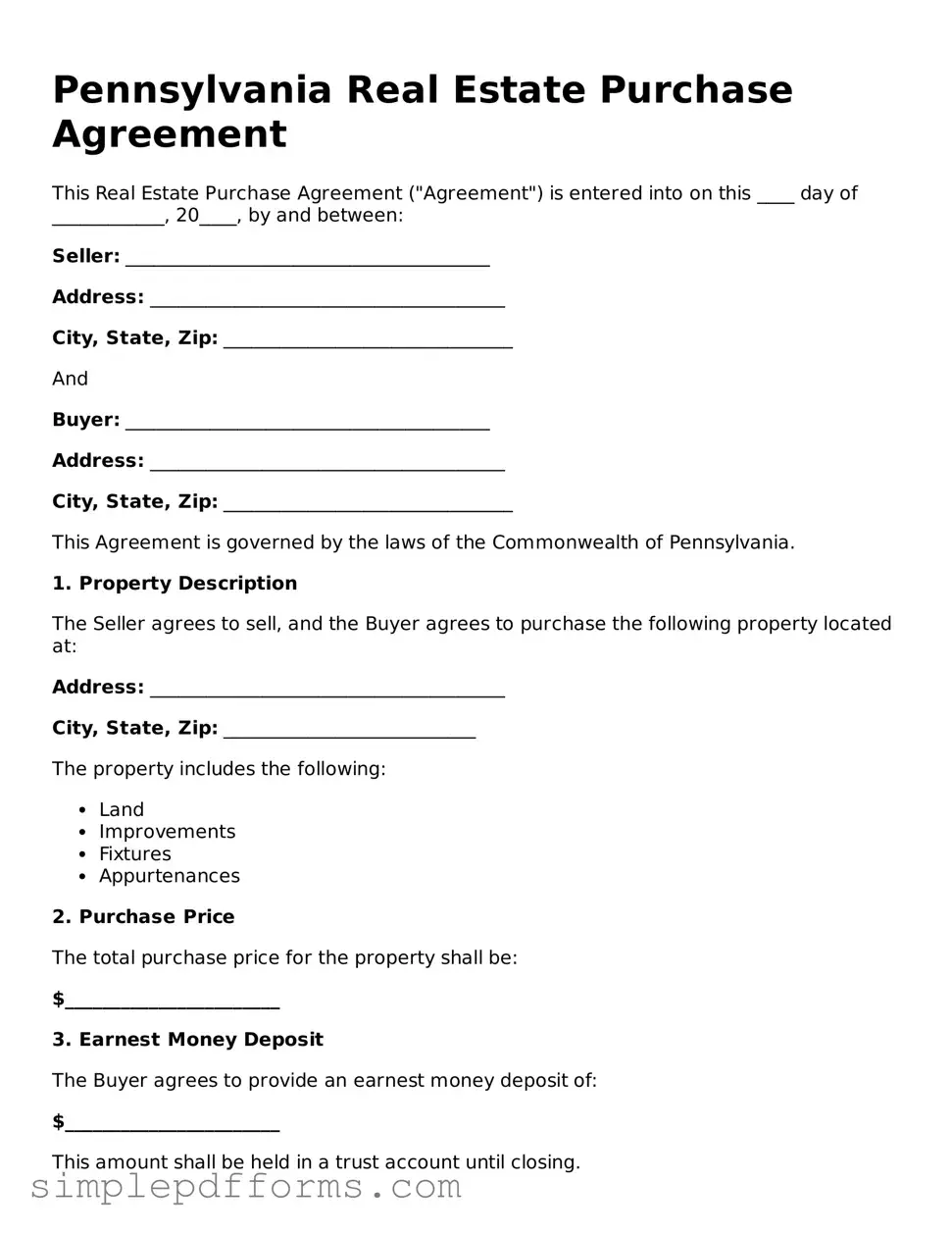Pennsylvania Real Estate Purchase Agreement
This Real Estate Purchase Agreement ("Agreement") is entered into on this ____ day of ____________, 20____, by and between:
Seller: _______________________________________
Address: ______________________________________
City, State, Zip: _______________________________
And
Buyer: _______________________________________
Address: ______________________________________
City, State, Zip: _______________________________
This Agreement is governed by the laws of the Commonwealth of Pennsylvania.
1. Property Description
The Seller agrees to sell, and the Buyer agrees to purchase the following property located at:
Address: ______________________________________
City, State, Zip: ___________________________
The property includes the following:
- Land
- Improvements
- Fixtures
- Appurtenances
2. Purchase Price
The total purchase price for the property shall be:
$_______________________
3. Earnest Money Deposit
The Buyer agrees to provide an earnest money deposit of:
$_______________________
This amount shall be held in a trust account until closing.
4. Financing Contingency
This sale is contingent upon the Buyer obtaining financing in the amount of:
$_______________________
The Buyer must secure financing within ______ days of executing this Agreement.
5. Closing Date
The closing of the sale will occur on or before the ____ day of __________, 20____.
6. Inspections
The Buyer has the right to conduct inspections of the property within ______ days prior to closing. Any required repairs must be negotiated prior to closing.
7. Additional Terms
Any additional terms negotiated by the parties should be listed here:
______________________________________________________________________
______________________________________________________________________
8. Signatures
In witness whereof, the parties hereto have executed this Agreement as of the day and year first above written.
Seller's Signature: ___________________________ Date: __________________
Buyer's Signature: ___________________________ Date: __________________
This Agreement is based on mutual agreement between the parties and shall be legally binding upon acceptance.
